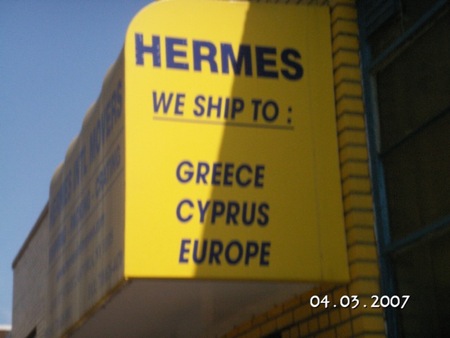Astoria: Here v. There
From Decoding New York
| Introduction |
| Jackson Heights |
| * Evolution |
| * Here v. There |
| * What's Real |
| Astoria |
| * Evolution |
| * Here v. There |
| * What's Real |
| Comparison |
| * Photo Gallery |
| * Sources
|
Astoria did not always have an overwhelming Greek presence. It was actually first settled by the Dutch and Germans in the first half of the 17th century. The next wave of immigration came in the 1890s with newly arrived Czech, Irish and Italian immigrants. In the 1920s the Irish immigrants founded many of the neighborhood's Catholic parishes. The 1960s saw a large number of ethnic Greeks from Greece, Albania and Cyprus. The Greek cultural imprint can easily be seen in the numerous Greek restaurants, bakeries, taverns and cafes, as well as several prominent Greek Orthodox churches.
Since the early 1990s, Astoria has seen a recent wave of immigration from Central and Eastern Europe, notably arrivals from Bosnia, Croatia, Poland, the Czech Republic, Albania, Montenegro and Serbia. New immigrant groups from the Middle East, Tibet, Bangladesh, India, Pakistan, South Korea, Japan, the Philippines, Latin America, Brazil and Southern Europe have also settled in the neighborhood, reflecting the general trend in ethnic diversity in Queens. Many groups had their moments in Astoria's history but it seems that the Greeks left the most prominent impressions on the neighborhood as a whole. From authentic foods, buildings, festivals and decorations, the Greek population has definitely tried to capitalize on the opportunities presented to them.
More recently, Astoria has become a neighborhood of diversity. There are not just Greek specialty shops anymore, but also Czech food markets and shops, Arabic ethnic restaurants, Asian cuisine shops, and Spanish foods present in Astoria. There are beautiful and impressive churches and buildings that represent a time of Catholic dominance of the Greeks and Italian, but the new groups that have recently immigrated to Astoria are using those same churches. Astoria now has Roman Catholic, Greek Orthodox, and Lutheran as well as Islamic schools. You walk down the street and you don't know what to try first from the Greek seafood in New York's Little Athens, the best chicken masaman at Thai Pavilion, to authentic Colombian at Pollos Mario. Astoria currently hosts the last of the city beer gardens, Bohemian Hall & Beer Garden. The diversity is never more apparent when you see that the garden serves Eastern European beers and Czech comfort food like schnitzel and dumplings, and that you can visit the multitude of nearby Greek café-bars for coffee, baklava, beer, and boisterous beats.

